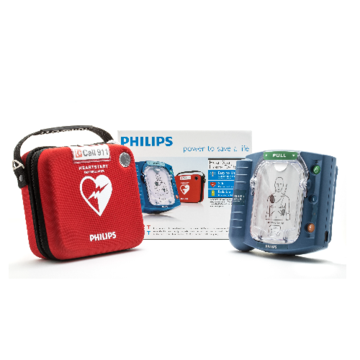
AEDLAND, one of the leading distributors of high-quality branded AEDs, continues to take strides in making AED solutions accessible to more people, not just in public locations but also in homes. As cardiac arrests remain a leading cause of death worldwide, home AED can be a life-saving measure. In a recent talk, AEDLAND highlighted the importance of having AEDs for home use, debunking some common misconceptions and shedding light on the potential benefits.
Most cardiac arrest cases occur outside hospital settings, with approximately 70% of out-of-hospital sudden cardiac arrests happening at home. In the US, these numbers add up to more than 350,000 annually. According to the 2018 report from the American Heart Association, nearly 90% of these cases result in death. These statistics underscore the urgent need for interventions that can improve survival rates in critical situations.
Home AEDs have the potential to provide immediate access to life-saving treatment, increasing the chances of survival until medical help arrives. AEDs work by analyzing the heart rhythm and delivering an electric shock, if necessary, to restore a normal heartbeat.
Every second counts in a cardiac arrest, and the availability of an AED at home can significantly reduce the time it takes to deliver defibrillation to the affected individual. Early defibrillation, which occurs within five minutes of cardiac arrest, can significantly improve an individual’s survival rate to as high as 75%. This percentage decreases every minute that passes without defibrillation.
AEDLAND says the importance of AED for home use cannot be overstated – especially for households with individuals at high risk of sudden cardiac arrest. By having an AED at home, bystanders can take immediate action and potentially save a loved one’s life.
AEDLAND also emphasizes the need for proper training and education when using a home AED. Maintenance and regular inspection of the AED device is crucial to ensure its proper functioning in an emergency. Most AED batteries and pads have expiration dates and must be replaced periodically.
For the Phillips HeartStart Home Defibrillator, the M5070A battery needs to be replaced every four years, and the M5071A pad needs to be replaced every 36 months or at the expiration date.
AEDLAND offers a variety of in-home AEDs that are easy to use and come with clear instructions and prompts for proper usage. Its team of experts is also available to answer any questions or provide guidance on AED maintenance and training.
Learn more here: https://aedland.com/.
Media Contact
Company Name: AEDLAND.com
Contact Person: Tony Myers
Email: Send Email
Phone: 16412206670
Country: United States
Website: https://aedland.com/
